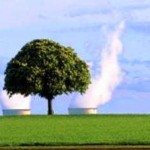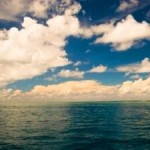WASHINGTON, DC, June 15, 2010 Navy pollution response experts have shipped 96,000 feet of oil containment boom to the Gulf of Mexico as part of the combined effort to reduce the environmental impact of the underwater oil spill in the Gulf of Mexico.
Naval Sea Systems Command’s (NAVSEA) Supervisor of Salvage and Diving (SUPSALV) has positioned equipment and personnel from Texas to Florida to support the Deepwater Horizon/BP oil spill response efforts led by the U.S. Coast Guard and the Department of Homeland Security.
“With a single phone call from the U.S. Coast Guard, 66,000 feet of open ocean boom and nine self-contained skimming systems, and the professionals to install and operate them, were dispatched . That’s your Navy – a 24-hour Navy, incredibly ready and trained to respond to a wide variety of national taskings,” said Vice Adm. Kevin McCoy, NAVSEA commander.
U.S. Navy’s Supervisor of Salvage and Diving’s (SUPSALV) Vessel of Opportunity Skimming System (VOSS) operates off Offshore Supply Vessel Vanguard to support the oil spill resulting from the April 20 explosion and fire on a drilling rig in the Gulf of Mexico.
The Navy oil booming equipment is designed to divert the oil spill from an identified area. According to Capt. Patrick Keenan, NAVSEA’s Director of Ocean Engineering, SUPSALV, the booming equipment was first deployed to the western tip of Ship Island, south of Gulfport, Miss. Keenan said the Oil Containment Boom System is the primary containment equipment at an oil spill site, and consists of vans, boom, air compressors, and necessary equipment to support the various types of containment booms.
“The Navy is committed to protecting the environment while meeting its national security mission,” said Keenan.
In addition to the boom systems, SUPSALV also shipped 23 oil skimming systems to the Gulf of Mexico, including the Vessel of Opportunity and Rapid Deployment Skimming Systems for oil spill clean up. Skimming systems are outfitted with machinery that separates spilled oil from the water, stores the recovered oil, and then transfers it to an off-vessel storage facility. Additionally, more than 130 personnel and three contracted offshore supply vessels are supporting the Coast Guard’s oil response efforts.
“A team of NAVSEA professionals are working around the clock to protect the sensitive coastline with oil booms and perform open-ocean skimming. NAVSEA’s Chief Engineer for Underwater Salvage has been an integral member of BP’s Engineering Command Cell that has assembled the best and brightest minds from around the world to try to stop the leak,” said McCoy.
SUPSALV has been the Navy’s oil pollution experts since the 1970s, as required by the Federal Water Pollution Control Act. SUPSALV provides technical, operational, and emergency support to the Navy and other federal agencies in several ocean engineering disciplines.














